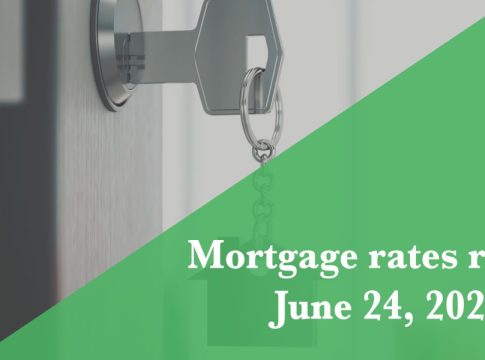Understanding Today’s Mortgage Rates
Current Trends in Mortgage Rates
As of June 23, 2025, the average interest rate for a 30-year fixed-rate mortgage in the U.S. stands at 6.797% according to Optimal Blue, a leading mortgage data firm. This marks only a slight decrease of about one basis point from the previous day and roughly two basis points from a week prior. Many of us may feel as if these rates have lingered near the 7% mark for quite some time— and they have.
Expectations surrounding lower rates sparked hopes when the Federal Reserve began slashing the federal funds rate last September. However, the anticipated dip in mortgage rates failed to materialize, with rates bouncing back after a brief decline. As a concerning note, January 2025 saw average 30-year mortgage rates surpass 7% for the first time since last May.
Historical Perspective on Rates
Rewind to January 2021, when mortgage rates dipped to a record low of 2.65%. That was a direct outcome of aggressive government measures aimed at stabilizing the economy during the pandemic. Experts agree we’re unlikely to see those ultra-low rates again, primarily due to the changing economic landscape, though rates around 6% could return if inflation is effectively managed.
Historically, average rates near 7% are not remarkably high. For context, back in the 1970s through 1990s, such rates were quite typical, with some peaks hitting as high as 18% in the early ’80s.
Tips for Securing the Best Mortgage Rates
While external economic conditions heavily influence mortgage rates, your personal financial situation also plays a crucial role. Here are actionable steps to help you secure the most favorable rate:
-
Improve Your Credit Score
- Aim for a credit score of 740 or higher to qualify for the best rates. Most conventional loans require a minimum score of 620; for FHA loans, the threshold can be as low as 500 with certain conditions.
-
Maintain a Low Debt-to-Income Ratio (DTI)
- Your DTI, calculated by dividing monthly debt payments by gross monthly income, should ideally be 36% or less. While you may qualify with a higher ratio (up to 43%), lower ratios can help secure better rates.
- Shop Around
- Don’t settle for the first offer. Seek prequalifications from various lenders—big banks, local credit unions, and online options—to find the best rates. Be sure you’re comparing apples to apples (e.g., some offers may include discount points, some may not).
Why Mortgage Comparisons Matter
In a marketplace with elevated interest rates, shopping around can lead to significant savings. Studies show that homebuyers who take the time to consult multiple lenders could save between $600 to $1,200 annually by securing a better deal.
Final Thoughts
Navigating today’s mortgage landscape may seem daunting, especially with current interest rates being comparatively high. Yet, by understanding the factors that affect your mortgage and taking proactive steps to improve your financial profile, you can position yourself for success. Always remember, a little legwork today can lead to considerable savings tomorrow.

Writes about personal finance, side hustles, gadgets, and tech innovation.
Bio: Priya specializes in making complex financial and tech topics easy to digest, with experience in fintech and consumer reviews.

